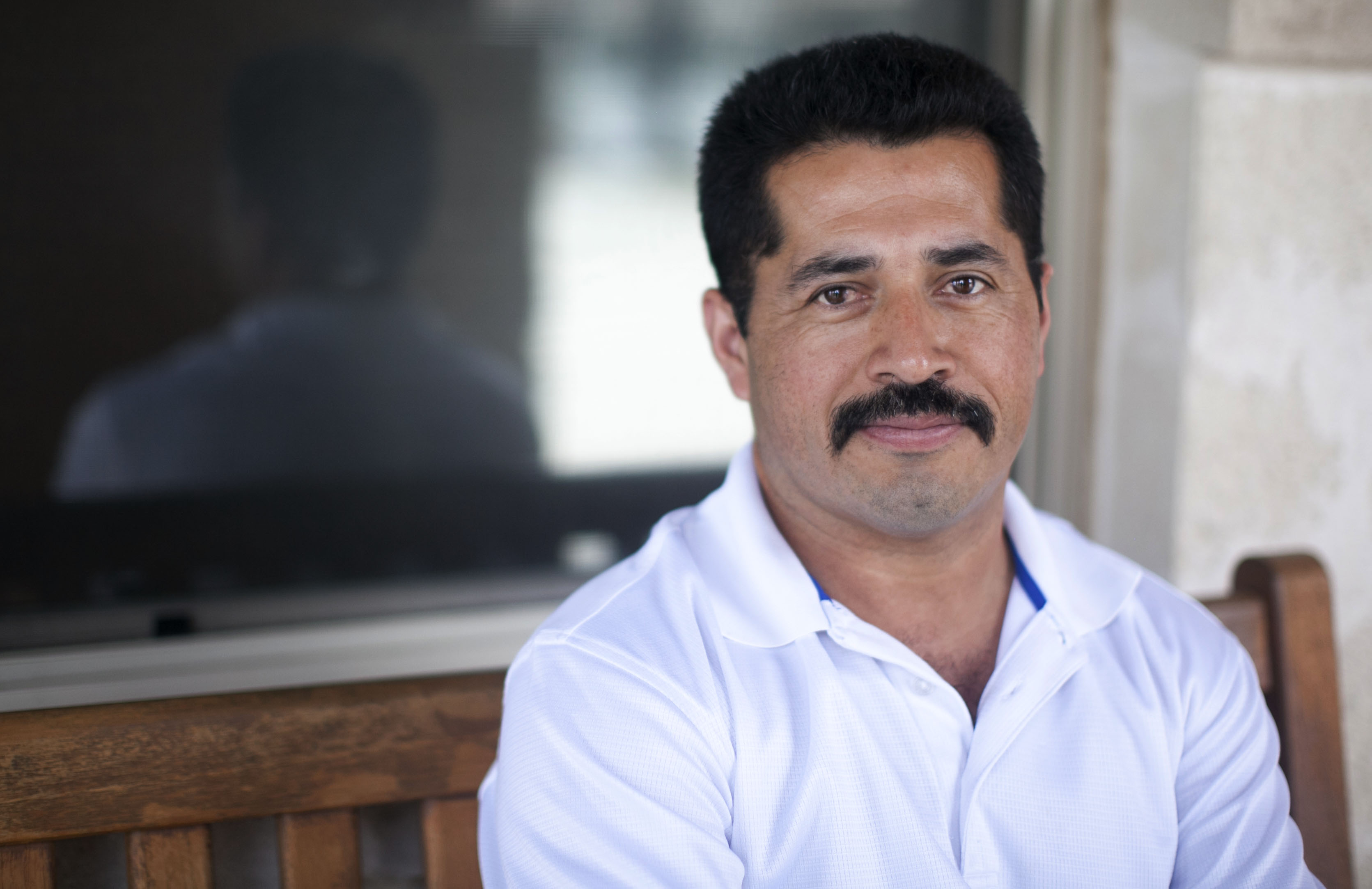
Juan Rosa immigrated to the United States from El Salvador and voted for the first time in 2002. Photo by Lizzie Chen/News21.
Juan Rosa, 45, of Del Valle, Texas, is the healthy living coordinator at El Buen Samaritano Episcopal Mission.
Rosa escaped the Salvadoran Civil War and immigrated to California to live what he called the American Dream. Part of that dream includes the right to vote, and Rosa believes it is important to have his voice heard.
“As soon as I got my citizenship, I made plans to go vote, and I did. I was so proud. It was something amazing,” Rosa said of his voting in 2002. “I still have the little sticker that said “I voted” and I’m proud of it.”
Many Latino advocacy groups in Texas argue the state’s voter ID law will hamper legal access to the ballot for Latino voters like Rosa, but he understands the need for a photo ID law, he said.
“I think there are always pros and cons when things like that come up. I see the pro because it may take sometime to get used to it, but Im pretty sure that it will save some problems that I’ve seen in the past or heard about in the past with people and voting when they are not supposed to,” Rosa said.
“We have to be all for changes, and I think this is a good one. I think it’s just an extra step they are taking to be safe on the voting side,” he said.
By Lizzie Chen, News21

